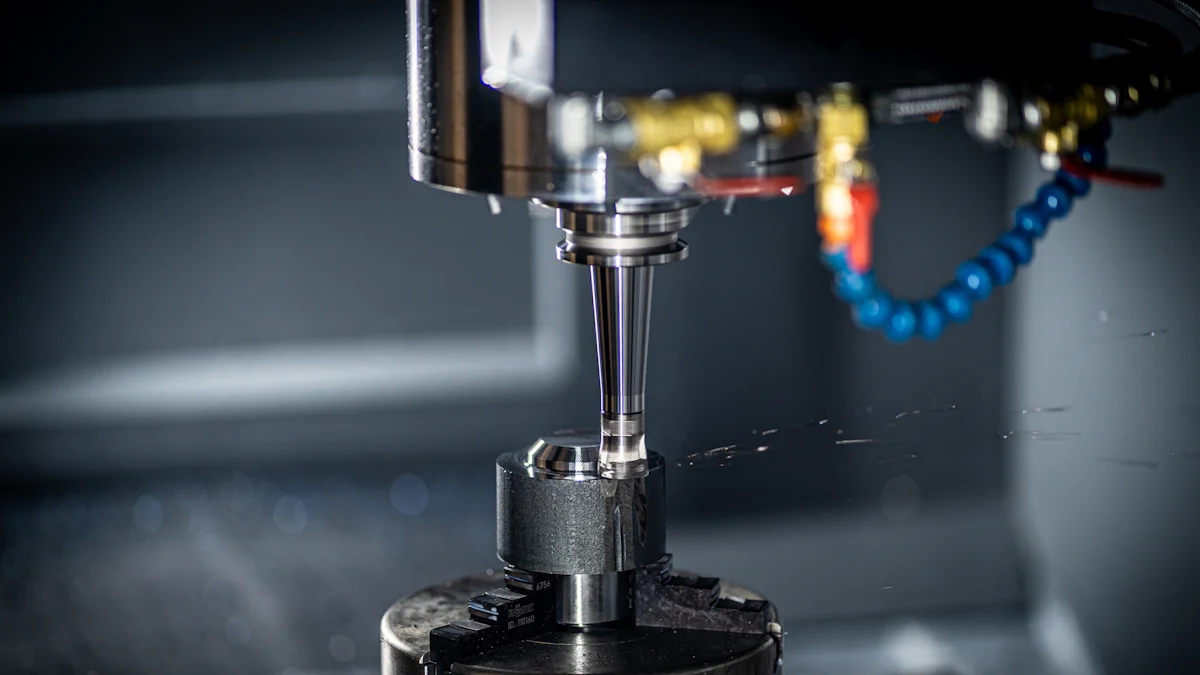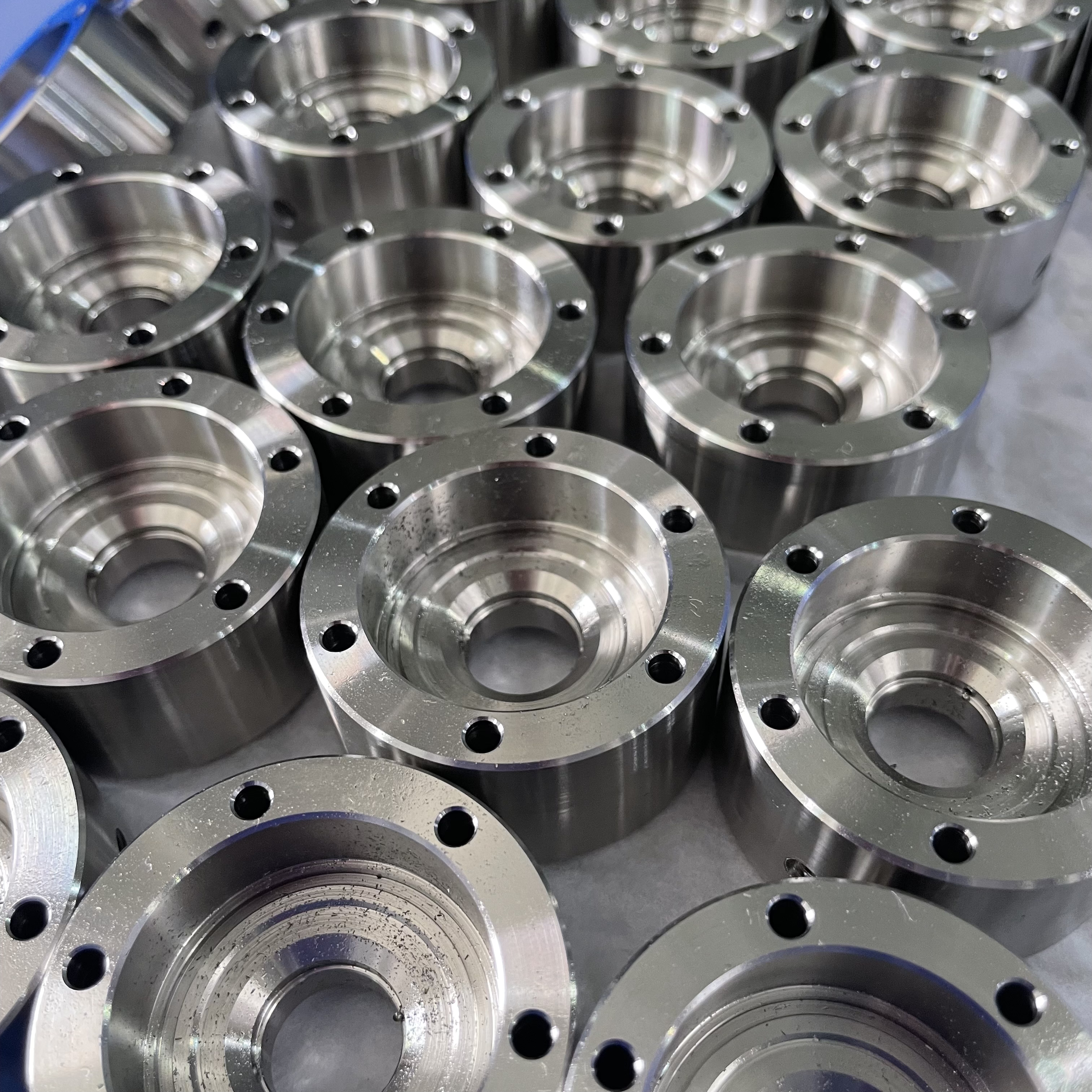Debunking Misconceptions About CNC Milling Application and Manufacturability Design

Exploring CNC Milling and Its Magic
What is CNC Milling?
The Basics Simplified
CNC milling, short for Computer Numerical Control milling, is like a high-tech sculptor. It uses computerized controls to guide precise movements of cutting tools, slowly chiseling away excess material from a workpiece to create intricate shapes and designs.
Why It's Like a Super-Power
Imagine having the ability to transform raw materials into complex and precise parts with incredible speed and accuracy. That's the magic of CNC milling. It's like having a super-power that can bring any design to life with astonishing precision.
Why We're Talking About It
Common Misunderstandings
There are common misconceptions about CNC milling that often lead to confusion. Some believe it's only suitable for large-scale industrial applications, while others underestimate its versatility in creating small, detailed components.
The Importance of Getting It Right
Understanding the true potential of CNC milling is crucial for designers, engineers, and anyone involved in manufacturing. By debunking these misconceptions, we can uncover the full spectrum of possibilities that CNC milling offers and harness its magic for various applications.
CNC Milling Applications: Unveiling the Truth
CNC milling application extends far beyond just working with metals. The versatility of CNC milling is truly remarkable, as it can be applied to a wide range of materials, from metals to plastics and even wood. This technology plays a pivotal role in shaping various components that are integral to our daily lives.
Beyond Just Metal - The Versatility of CNC Milling
From the sleek curves of an automobile's body to the intricate components within your favorite gadgets, CNC milling is at the heart of their creation. It enables the precise shaping and carving of metal, plastic, and other materials, ensuring that each part meets exact specifications with unparalleled accuracy.
In fact, CNC milling is not confined to industrial applications alone; it permeates everyday life. Whether it's the perfectly crafted casing of your smartphone or the intricately designed parts in household appliances, CNC milling quietly but significantly impacts our daily experiences.
CNC Milling Application: Not Just for the Big Players
The benefits of CNC milling extend beyond large-scale projects. Small-scale endeavors also reap the rewards of this advanced manufacturing process. By leveraging CNC milling, small projects can achieve precision and intricacy that would otherwise be unattainable through traditional methods.
Moreover, CNC milling fuels innovation by enabling rapid prototyping and iterative design processes. It empowers designers and engineers to bring their concepts to life swiftly and accurately, fostering a culture of creativity and advancement across industries.
The Art of Manufacturability Design
Crafting for Success
When it comes to manufacturability design, there are key elements that play a crucial role in ensuring the seamless transition from concept to creation. First and foremost, considering the material properties is essential. Understanding how different materials behave during the manufacturability design process allows for the selection of the most suitable material for the intended application. Additionally, incorporating standardized components and designs simplifies production and reduces costs, making the manufacturing process more efficient.
Avoiding Common Pitfalls
In manufacturability design, it's vital to steer clear of common pitfalls that can hinder the production process. Overlooking tolerances and clearances can lead to assembly issues, while neglecting to account for tool access may result in challenges during machining. By meticulously addressing these potential pitfalls early in the design phase, manufacturers can streamline production and minimize setbacks.
Real-World Examples of Manufacturability Design
Success Stories
One notable success story in manufacturability design is seen in the aerospace industry. Engineers successfully designed complex aircraft components with intricate geometries that were not only functional but also optimized for manufacturability. This approach significantly reduced production time and costs while maintaining high-quality standards.
Lessons Learned the Hard Way
On the flip side, there have been instances where overlooking manufacturability considerations led to costly setbacks. In one case, a company encountered difficulties when attempting to manufacture a product with intricate features that were challenging to produce using traditional methods. This experience underscored the importance of integrating manufacturability considerations early in the design process.
Busting Myths and Embracing Facts
The Top Misconceptions About CNC Milling and Manufacturability Design
Myth vs. Reality
Myth: CNC milling is only suitable for mass production and large-scale industrial applications.
Reality: While CNC milling is indeed used in large-scale manufacturing, it also caters to small-scale projects, rapid prototyping, and custom designs. Its versatility extends across various industries, from aerospace to consumer electronics.
Myth: Manufacturability design complicates the creative process and limits design possibilities.
Reality: Incorporating manufacturability considerations early in the design phase enhances creativity by providing insights into material properties, production constraints, and cost-effective solutions. It empowers designers to innovate within practical parameters.
Why These Myths Persist
These myths persist due to a lack of comprehensive understanding about the capabilities of CNC milling and manufacturability design. Limited exposure to real-world applications and success stories contributes to these misconceptions. Additionally, traditional perceptions of manufacturing as rigid and inflexible further perpetuate these myths.
The Future of CNC Milling and Manufacturability Design
What's Next?
The future of CNC milling and manufacturability design holds exciting prospects for advancements in automation, precision, and material capabilities. Innovations in machine learning algorithms are poised to optimize toolpath generation, enhancing efficiency and reducing production time.
How You Can Be a Part of It
As technology continues to evolve, individuals interested in manufacturing can embrace the future by staying updated on emerging trends, exploring interdisciplinary collaborations, and leveraging digital tools for design optimization. By actively engaging with industry developments, enthusiasts can contribute to shaping the future landscape of CNC milling and manufacturability design.
See Also
Gaining Insights from Misconceptions: Unveiling CNC Milling Services
Grasping the Fundamentals of CNC Machining for Producing Components and Parts
Mastery of CNC Machining: Tolerances, Prototyping, and Material Choices
Journeying through CNC Milling: An In-Depth Look at Precision Engineering
Addressing the Obstacles: Improving CNC Prototyping Precision and Efficiency
About US
Follow Us
Your prototype holds unparalleled significance, and we deeply value its uniqueness. Collaborating with you during the preparation phase for running your prototype or parts is a commitment we gladly embrace. Whether it's a single part or a complex assembly, we are dedicated to selecting the optimal tools and pathways to bring your envisioned product to life.
At Precision Fab CNC Machining, we specialize in producing parts for prototypes, short runs, and high-volume production. Our prototyping machine capabilities extend across metal, plastic, and wood machining, with welding fabrication services available to complement and finalize your prototype if required.
Address
Address: Room320 10F, Building A,Nanshan international building, Dayawan District, Huizhou, Guangdong, 516001 China
Contacts
billy@timaycnc.com

